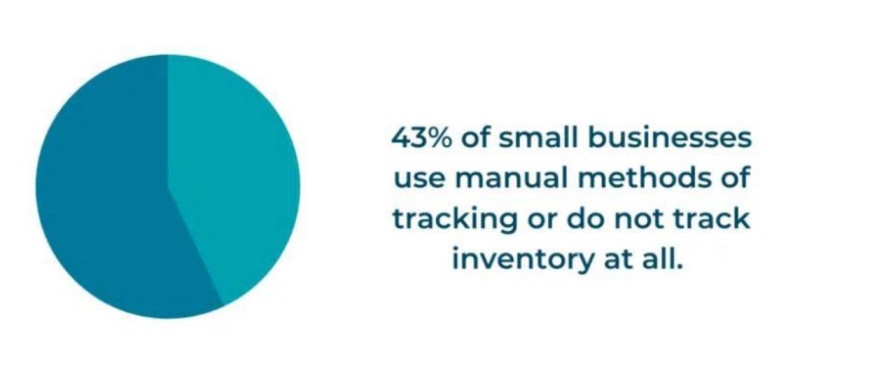Inventory Asset Management in 2024: Essential Strategies for Businesses
Inventory asset management is the key to business success in 2024. Learn how to optimize your assets, prevent downtime, and create a centralized asset management system.
In this article:
- Understanding Inventory Management and Asset Management
- What are Assets?
- What is Inventory?
- Asset Management vs Inventory Management
- Inventory Asset Management
- Benefits of Inventory Asset Management System For Businesses
- 1. Improves Employee Productivity
- 2. Minimize Asset Theft
- 3. Ensure Preventive Maintenance
- 4. Informed Future Purchases
- Essential Strategies to Create an Inventory Asset Management System in 2024
- 1. Evaluate Your Asset Management Goals
- 2. Start With Accurate Data
- 3. Choose a Reliable Asset Management Software
- Follow best Inventory and Asset Management Practices.
- Manage Your Inventory Asset Management with Itefy

Have you ever lost crucial equipment right before a deadline? Can you imagine the stress of a crashed laptop before an important presentation? These are all your business assets that keep your day-to-day operations running smoothly.
However, having the right equipment is not enough; you need a system to track and manage them effectively. This is where inventory asset management can help you.
The asset management market size is expected to grow from USD 4.7 billion to USD 7.6 billion by 2028. It is one of the best solutions for managing a business's assets across different departments, facilities, and geographical locations.
Let's see how Inventory asset management works, what its benefits are, and some effective strategies for 2024.
Understanding Inventory Management and Asset Management
As shown by name, inventory asset management is a concept that drives from both inventory and assets. To understand it better, we first need to explain asset and inventory management as two distinct practices.
What are Assets?
Assets are the resources that a company uses to run its business, deliver services, or create value. There are two types of business assets in general:
- Tangible Assets: These are the physical resources such as machinery, vehicles, furniture, I.T. equipment or fixtures, etc.
- Intangible Assets: Intangible assets are non-physical resources such as patents, copyrights, trademarks, or customer information.
What is Inventory?
Inventory refers to the raw materials, supplies, and tools a company uses to build products. It also includes the finished, ready-to-dispatch products in stock. Inventory is divided into four different categories:
- Raw Materials: These are the components and products used in the production process. For example, a furniture brand's raw material might include wood, nails, glue, or foam.
- Work in Progress: WIP inventory includes semi-finished goods that are still being processed.
- Finished Goods: These are the ready-to-sell items in the company's warehouses.
- MRO: Maintenance, repair, and operations (MRO) are the supplies used in maintenance and repair works.
Asset Management vs Inventory Management
Asset management is the techniques and practices a company uses to track, maintain, and repair its assets. It starts from the procurement process and keeps going through the entire life cycle of assets. This includes taking care of the company's assets and keeping them in optimal condition. It streamlines all the maintenance work and reduces the chances of any unexpected breakdown or errors.
Inventory management refers to the processes of how businesses order and store raw materials and stock components during and after the production of goods. It keeps an eye on the in-stock material and decides when and how much to restock based on forecasts, lead times, and storage costs.
While the terms 'Asset' and 'Inventory' are often used interchangeably, both are distinct concepts with different management goals. Asset management is focused on improving asset performance, increasing business productivity, and lowering operational costs.
On the other hand, inventory tracking or management focuses on meeting customers' demands and maintaining a positive brand image. It aims to reduce stock-outs with the help of data-driven decisions.
Inventory Asset Management
Inventory asset management is a centralized software system that tracks, monitors, and optimizes all of your physical and digital assets. Think of it as a 'hub' for all of your business assets, from tables and computers to software licenses. It acts as a central repository for all your asset information and helps you with:
- Asset organization: A central database that records and locates all of your company's assets.
- Maintenance: Track service history and schedule timely maintenance to avoid breakdowns.
- Optimization: Monitor how well each asset is used and identify upgrade opportunities.
- Robust Asset Tracking: Conventional and manual sheets can be difficult to manage, and you can make mistakes while recording your assets. The innovative asset management software solves this problem using QR codes, and you can instantly update and identify the inventory.
- Lifecycle management: Track the lifespan of each asset and receive alerts for upcoming maintenance or replacement.
Benefits of Inventory Asset Management System For Businesses
Asset inventory management goes beyond keeping records. It is a powerful tool that empowers your employees, saves you time and resources, and helps with data-driven decisions. Let's take a look at some key benefits:
1. Improves Employee Productivity
Studies show that employees spend 1.8 hours every day and 9.8 hours per week searching and gathering information. Inventory asset management prevents this. It tracks every item's location so employees can find what they need quickly.
Imagine a marketing team preparing a presentation for a week only to find out their projector is out for repair. Asset management systems provide maintenance updates. This helps employees save time and frustration and focus on more productive tasks.
2. Minimize Asset Theft
Employee theft is more common than you think. Only in the United States does employee theft cost businesses $ 50 billion per year. This includes both tangible and intangible assets.
Proper asset inventory systems can help you minimize this. It can track every single asset's location, which makes it less vulnerable to theft. This transparency helps you identify missing items, which protects your valuable resources.

Cost of Employee Theft
Source: Exploding Topics
3. Ensure Preventive Maintenance
Businesses often rely on reactive maintenance, which means fixing things only when they break or malfunction. While it may seem easy upfront, reactive repair can be costly and ineffective in the long run. Imagine disruption in a crucial sales presentation because a laptop suddenly crashes. Industry experts suggest that you should observe the 80/20 rule.
This means 80 percent of your maintenance should be proactive, while the remaining 20% should be corrective actions. Asset management inventory systems track equipment health and allow you to schedule timely maintenance. This saves your business from unexpected downtime and disruptions.
4. Informed Future Purchases
Studies show that 43% of businesses don't track their equipment effectively. This can lead to unnecessary spending on new things you already own. Inventory asset management fixes this by providing a clear picture of what you already own.
Imagine you have 20 computers, but data shows only 16 are regularly used. This helps you decide if a new employee truly needs a new machine or if you can assign them an existing one. This data-driven approach helps businesses avoid unnecessary purchases and keep operational costs down.

Percentage of Businesses Who Don’t Track Inventory
Source: Go Codes
Essential Strategies to Create an Inventory Asset Management System in 2024
Now that you are aware of the benefits of inventory asset management. Let's explore some of the best strategies to optimize your asset tracking and utilize its full potential.
1. Evaluate Your Asset Management Goals
First of all, you need to evaluate your asset management needs and objectives. How many assets do you have, physical or digital? Is creating a complete inventory important, or just tracking key items? Most importantly, what problem do you want to solve? Is it lost equipment, missed maintenance, or controlling operational costs?
By understanding your needs, you can build an asset management system that tackles your specific challenges.
2. Start With Accurate Data
The key to a strong asset management system is accurate data. Start by listing everything you need to track, from physical to digital assets. The list can then be imported into your chosen software. If you already have a digital system, it is critical to do an asset audit. This checks your existing data for accuracy.
Think of it as cleaning up a file cabinet, eliminating duplicates, and updating any missing information. This ensures your system has a reliable foundation for managing your assets.
3. Choose a Reliable Asset Management Software
To set up an effective asset management strategy, you need reliable software. Here is what to look for:
- Cloud-Based: Choose a platform that is accessible from anywhere and has an internet connection. This will allow anyone from your company to update and access information.
- NFC Asset Tracking: There are different inventory asset management tools out there, and each uses different technology, such as NFC or RFID, to keep track of assets. See which suits you the best and go for it.
- Mobile-Friendly: Choose a web app with a mobile interface for on-the-go asset management.
- Asset tracking: Integrate barcode scanning or other methods to locate and track assets easily.
- Comprehensive Management: Look for features like search/ filter options, a ticketing system, maintenance history tracking, and current asset location
- Data and Insights: Go for a platform that helps you with real-time asset status updates and reports on asset performance.
Follow best Inventory and Asset Management Practices.
Consider incorporating best practices from inventory and asset management to maximize your asset management system's effectiveness.
- Inventory Management: Implement strategies like regular inventory checks to ensure you have the right equipment when needed.
- Asset Management: Use preventive measures to keep your assets in top condition and avoid sudden breakdowns.
Remember, the goal is to have your assets available when needed. To extend the lifespan of your equipment, combine inventory best practices with proactive asset management and eco-friendly disposal practices.
Manage Your Inventory Asset Management with Itefy
An inventory asset management system puts all your asset data in one central hub. It empowers your employees, saves you time, and minimizes operational costs. Real-time insights and accurate data help you make informed decisions that match with your business goals.
Itefy's advanced asset management system is the best way to achieve this. Our cutting-edge tools help you track, organize, and manage your assets securely, ensuring they are always in the best condition and readily available whenever you need them.
Sign up for Itefy and get a 14-day trial to enjoy all of its features, or contact us for more information.
